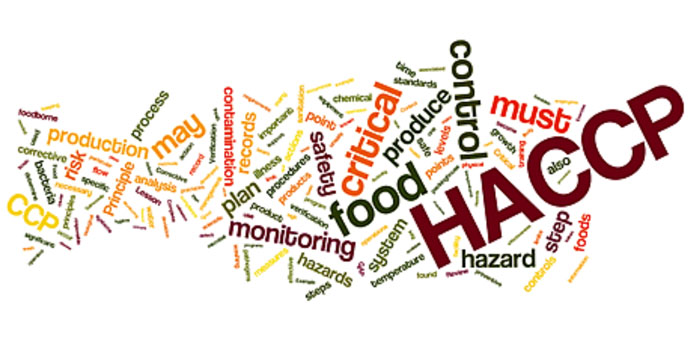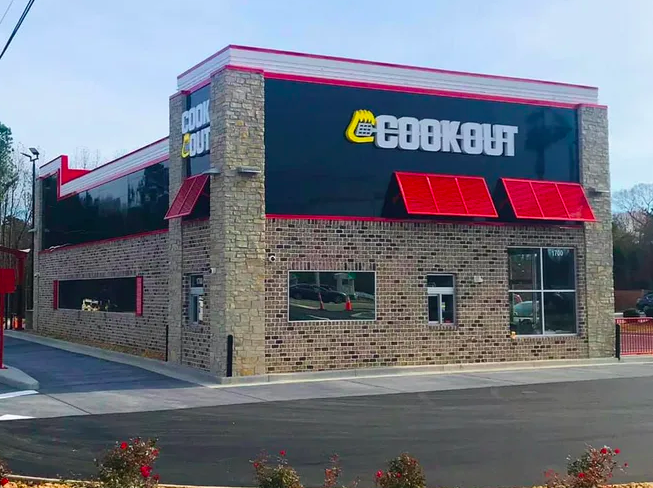Even if you aren’t a certified food safety manager any food truck owner needs to know about Hazard Analysis and Critical Control Points and how it relates to their mobile food business. HACCP is a management system in which food safety is addressed through the analysis and control of biological, chemical, and physical hazards from raw material production, procurement, and handling to manufacturing, distribution, and consumption of the finished product.
Originally developed in 1971 for use by NASA, HACCP is intended for use in all segments of the food service industry including food trucks. Food safety systems based on the HACCP principles have been successfully applied in food processing plants, retail food stores, and food service operations.
The Seven HACCP Principles:
The seven principles of HACCP have been accepted by most government agencies and the food industry.
Conduct a hazard analysis
The purpose of a hazard analysis is to develop a list of hazards that are likely to cause injury or illness if they are not controlled. Points to be considered in this analysis can include skill level of employees; transport of food; serving elderly, sick, or very young; thawing of potentially hazardous foods; high degree of food handling and contact; adequacy of preparation and holding equipment available; storage; and method of preparation.
The next step is to determine whether the factors may influence the likely occurrence and severity of the hazard being controlled. Finally, the hazards associated with each step in the flow of food should be listed along with the measures necessary to control the hazard.
Determine critical control points (CCPs)
A critical control point is any step in which hazards can be prevented, eliminated, or reduced to acceptable levels. CCPs are usually practices or procedures that, when not done correctly, are the leading causes of food-borne illness outbreaks.
To determine CCPs:
- At this step in preparation, can food become contaminated and/or can contamination increase?
- Can this hazard be prevented through corrective action?
- Can this hazard be prevented, eliminated, or reduced by steps taken later in the preparation process?
- Are you able to monitor the CCP?
- How will you measure the CCP?
- Can you document the CCP?
Establish critical limits
A critical limit ensures that a biological, chemical, or physical hazard is controlled by a CCP. Each CCP should have at least one critical limit. Critical limits must be something that can be monitored by measurement or observation. They must be scientifically and/or regulatory based. Examples include temperature, time, pH, water activity, and available chlorine.
Establish monitoring procedures
Monitoring is a plan that includes observations or measurements to assess whether the CCP is being met. It provides a record of the “flow of food” through the establishment. If monitoring indicates that the critical limits are not being met, then an action must be taken to bring the process back into control.
The monitoring system should be easy to use and meet the needs of the food establishment as well as the regulatory authority. It is important that the job of monitoring be assigned to a specific individual and that he or she be trained on the monitoring technique.
Establish corrective actions
If the criteria for a CCP are not being met, some type of corrective action must be taken. HACCP plans should specify who is responsible for implementing the corrective action and what corrective action was taken. They should be established in advance as part of the HACCP plan.
Establish verification procedures
These procedures are activities, other than monitoring, that determine the validity of the HACCP plan and that the system is operating according to the plan. An important aspect of verification is to determine whether the plan is scientifically and technically sound.
Also, verification shows that all of the hazards have been identified and that if the HACCP plan is properly implemented, these hazards can be effectively controlled. The verification step provides an opportunity to make modifications to the plan if necessary.
Establish record-keeping and documentation procedures
Record-keeping and documentation procedures should be simple to complete and include information that illustrates that the established standards are being met. Employees need to be trained on the record-keeping procedures and why they are critical parts of their job. Examples of records include time/temperature logs, checklists, forms, flow charts, employee training records, and standard operating procedures (SOPs).
RELATED: Top 10 Food Safety Tips For Your Food Truck
The Bottom Line
The success of an HACCP system in your mobile food business depends on educating and training yourself and your food truck employees in the importance of their role in producing safe foods. It is important to recognize that all of your employees must first understand what HACCP is and then learn the skills necessary to make it function properly. Provide your staff with specific training that includes instructions and procedures that outline the tasks of employees monitoring each CCP.
Does your food truck have a HACCP system in place? Share your thoughts on this topic in the comment section or social media. Facebook | Twitter




